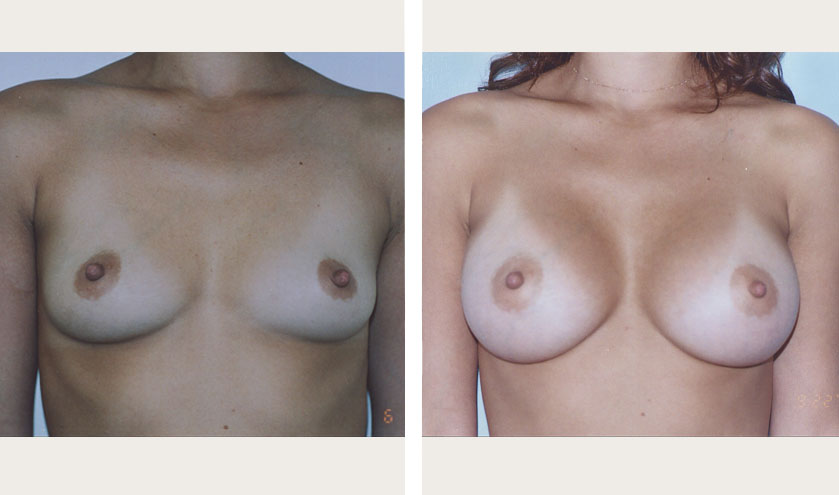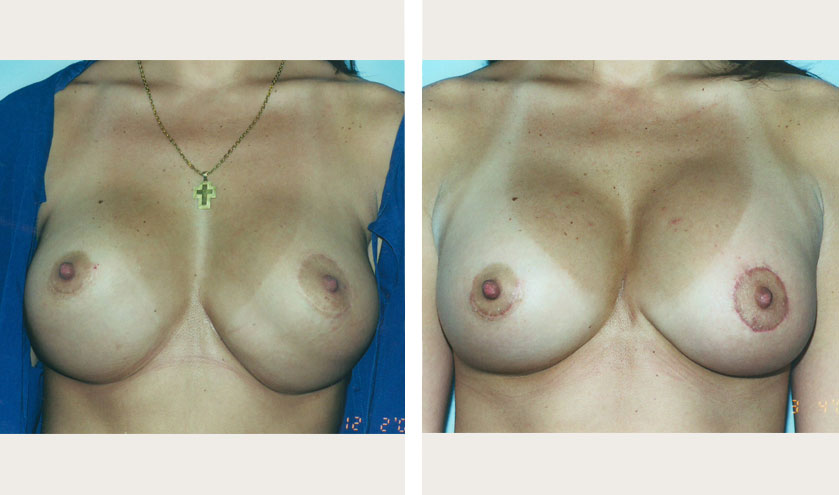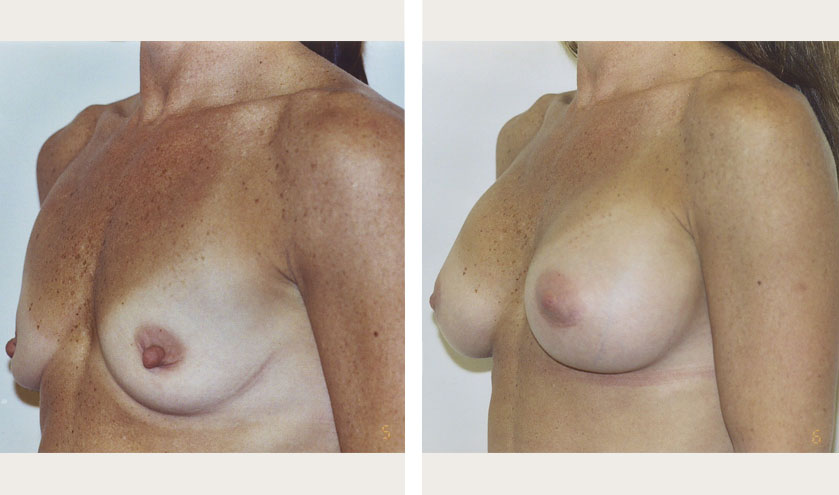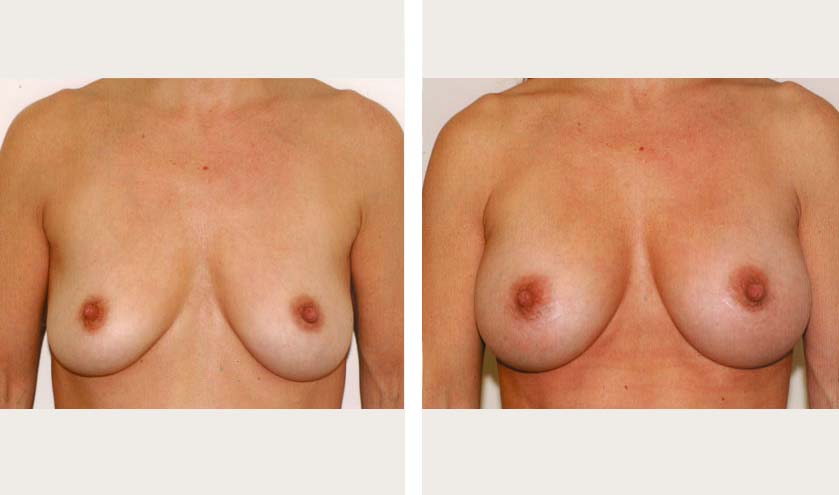
Breast Augmentation NYC | Breast Implants NYC
An experienced breast augmentation surgeon can transform the way you feel when you have your breasts enlarged. Recent breakthroughs in product choice and surgical technique allow more natural results that inspire confidence and a healthy self-image.
Manhattan breast augmentation surgeon Dr. Thomas W. Loeb is among the city’s most respected plastic surgeons. In addition to his long surgical career, he is also a clinical instructor of plastic surgery at Cornell University whose work has been published university text books. He has received the American Medical Association’s “Physician Recognition Award” on numerous occasions and picked up nationwide notoriety for his work in breast augmentation among other procedures.
Those searching for the a skilled breast augmentation surgeon in NYC will be well-served by working with a surgeon as reputable as Dr. Loeb. However, before you take the next step, it is important to first become educated about:
There are two general options for breast implants that both contain an outer silicone shell, but differ in terms of filler material and overall consistency. The choice ultimately boils down to patient anatomy, body type, desired results and, ultimately, patient preference.
Though surgeons prefer silicone for most patients based on look and feel, silicone is not without controversy. “They pose more of a risk if they leak,” reports WebMD. “In 1992, the FDA halted the sale of silicone implants because of safety concerns. In 2006, after reviewing more research, the FDA started allowing certain silicone breast implants back on the market.” That said, both options are considered safe, as demonstrated by ongoing studies.
“Gummy bear implants” are another term you’ll hear used in many circles. ABC News referred to this particular type of silicone as “the future of breast augmentation surgery” due to the natural-looking results and lower rupture rates compared to other kinds of silicone.
They received their nickname in reference due to gel-like consistency and the ability to maintain its shape as would a gummy bear cut in half. They are not in fact “solid”, but rather are just slightly thicker than fourth generation “cohesive” designs.
Dr. Loeb explains:
“I like using so-called ‘gummy bear’ implants in many of my patients because they are less likely to ripple, rotate, cause contracture or change shape over time. Not only are they durable, but they provide a very natural looking breast profile and are easy to put in without noticeable scarring compared to other types, such as silicone.”
However, he adds, they are not necessarily for everyone. “They do require a bigger incision than I would use for saline,” Dr. Loeb clarifies, “so the risk of a more noticeable scar is greater. Also, I recommend that patients who need extra fullness in the upper pole of the breast go with saline for a more natural contour as well.”
Shape is as important of a consideration as the material. The question of shape goes to fullness and positioning of the implant. It must be assessed relative to the amount of natural breast tissue. The desired shape will also make a difference as to incision technique.
Breast augmentation size is measured by cubic centimeters of volume. Aesthetics are one factor in determining size, but it’s also important to consider your body type – how the implants will sit and what your body can physically withstand. You’ll need to consider your lifestyle. Furthermore, you’ll want to be sure your news breast size won’t cause wardrobe issues or cause sagging and back pain later on.
Other long-term risks of oversized implants include:
Surgeons often talk about “profile” in discussing size:
Often, women come to a plastic surgery office asking to be a certain “cup size.” This can be a deceiving measurement, though. Bra sizes vary from manufacturer to manufacturer – and, on top of that, a study conducted by Wacoal Lingerie found that 8 in 10 women wear the wrong sized bra anyway. By rough estimates, each 150-200 ccs takes you up one-and-a-half cup sizes.
The American Society of Plastic Surgery website has an extensive collection of breast augmentation before and after photos that can help women considering breast augmentation visualize their potential results. Dr. Loeb’s own gallery of before and after images serves as a great testament to the quality of his work as well as gives patients an idea of the thought process behind the procedure and how he achieved the result desired.
It is important to review such images with Dr. Loeb as guidelines for what you hope to achieve. While it may not be possible to exactly replicate the looks you choose, breast augmentation before and after photos serve as important communication tools between doctors and their patients.
Click any photo to enlarge




Click for Additional Breast Augmentation Before and After NYC Photos!
One of the newest advances in breast augmentation surgery is the use of a patient’s own fat to build new breast tissue.
There are certain benefits of using fat transfer in breast augmentation procedures.
For example, incisions and scars are smaller as compared with traditional surgery. For mastectomy patients who are have total breast reconstruction, fat grafting may be preferable to dealing with scarred, damaged, or irradiated tissue.
On the other hand, a fat transfer breast augmentation is not ideal for patients who desire very large breasts. Some of the transferred fat will inevitably be reabsorbed by the body. Even if a surgeon adds a little extra fat, the end results are more difficult to precisely predict. Extremely thin women who have little tissue to harvest may also not be good candidates for this method.
“How much are breast implants?” is a popular question. The cost depends upon several factors, including not only the cost of surgery, but also anesthesia, the implants themselves, and all required follow up visits with the surgeon.
Breast augmentation cost does not vary wildly whether a patient chooses saline or silicone. Silicone is usually slightly more expensive, but the difference is usually not enough to dictate the patient’s choice. It’s more important that a patient choose the look, feel and end result that will yield long-term satisfaction.
Dr. Loeb’s office works with individuals on breaking down the overall cost into affordable payments. For those seeking breast reconstruction after mastectomy, insurance companies will often cover the cost of your procedure. Patients are encouraged to speak with their insurance providers about such options.
For many patients, one of biggest concern is the recovery phase. Pain consideration and management, time off from work, swelling, and follow-up visits are all part of the process.
Most patients manage post-operative pain by taking prescribed pain pills on a set schedule to head off any discomfort, and most patients are back to work within about one week of surgery. Patients are advised to avoid heavy lifting and particularly strenuous activities for 2-4 weeks. It takes about three months for the swelling to resolve and to see your final results. Your surgeon will follow-up with you several times during throughout the breast augmentation recovery period to ensure proper healing. Read more about minimizing recovery time from the augmentation procedure.
With any incision, there is going to be a scar. How visible that scar is depends on individual healing abilities and surgeon skill. Breast augmentation scars can be minimized through several surgical approaches including the trans-axillary technique, where incisions are hidden within the armpits, and the peri-areolar technique, where incisions are made around the border of the areola.
Infra-mammary breast augmentation is among the most common of procedures. In this type of situation, the surgeon makes the incision inside a well-defined breast fold thereby concealing the scar. Silicon gels, Vitamin E supplements and pressure bandages are also often recommended to aid healing. For more information on reducing breast implants scars, see our FAQ section on scarring.
Breast implants and pregnancy do not need to be mutually exclusive. Women who undergo the procedure are almost always able to nurse their babies without incident.
However there is a possibility of certain side effects such as:
If you plan to breastfeed a baby in the future, be sure to discuss this with Dr. Loeb, as it may affect the exact surgical technique he chooses. For instance, he may choose an incision under the breast or in the armpit, rather than around the areola to avoid any possibility of nerve or gland interference. He may also choose to position the implant under the chest muscle, where it will put no pressure on the mammary gland.
Breast implants are not necessarily permanent. They can be removed.
Whether driven by complications like capsular contracture or rupture, there are other reasons patients opt for removal. Many of them are purely psychological.
Reasons given run the full spectrum of physical and emotional response. Women have later admitted to feeling:
Women dissatisfied with a prior breast augmentation are encouraged to talk with Dr. Loeb about making a change.
Surgery is a major decision that shouldn’t be downplayed by strong desires to look more attractive. Any good plastic surgeon will make it perfectly clear that breast implants do not necessarily last forever. The FDA says that “up to 20 percent of women” will need to have theirs removed or replaced in 10 years.
CBS news has reported that the “shelf life” of breast implants is said to be about 10 years, although that does not mean you need to worry or have them replaced after that amount of time if they are not causing issue.
The most commonly experienced breast augmentation risk is rupture. According to the FDA, an implant may leak or break open due to capsular contracture, mammogram compression or damage sustained during a biopsy, overfilling or over-handling during the procedure itself, damage from surgical instruments, normal aging and physical trauma. Ruptures can be apparent with deflation occurring or they can be silent and only detected through diagnostic imaging.
Other adverse effects reported by the FDA:
“Many horror story scenarios you hear about in the media often stem from patients choosing the wrong surgeon,” explains Dr. Loeb. “Doctors may have misrepresented their experience with breast augmentation specifically or patients may have hastily selected a surgeon who was not board-certified, overseas, or offering rock bottom prices.”
Choosing the right surgeon will ensure that you have someone fully invested in your recovery who is not only capable in performing low-risk breast augmentation procedures, but also in managing any unavoidable complications that may arise from surgery.
According to the American Society of Plastic Surgeons, over 286,000 women had breast augmentation in 2014, holding its spot as the #1 cosmetic surgical procedure in the country since 2006. Most women who elect to have the surgery are between 30 and 39 years old, but the procedure is just as common in women in their forties as it is for women in their twenties.
Breast augmentation is most commonly done to repair the toll of pregnancy and breastfeeding once a woman is done having children, to correct natural anomalies or deformities that cause insecurity, or simply to fill out a cup size to gain a better fit for most clothing and a more attractive silhouette.
Before you get the procedure done, make sure you have answers to the following questions:
Whatever your personal reasons for seeking breast augmentation surgeon may be, Dr. Thomas W. Loeb would love to hear your story. He is happy to discuss the pros and cons with you at a consultation done either in-office or virtually via Skype if you do not live in the New York City metro.